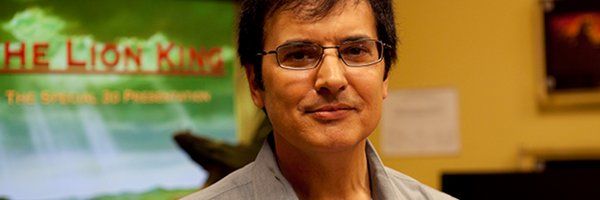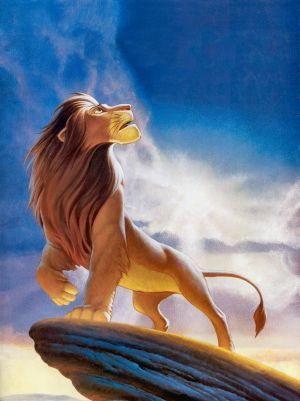Starting on September 16th, audiences can catch a special two-week theatrical run of the Oscar and Golden Globe winning The Lion King, for the first time ever in Disney Digital 3D, before then becoming available on Blu-ray 3D on October 4th. Having been nearly a decade since The Lion King last appeared on the big screen, it’s easy to understand why fans of the film, and Disney fans in general, are anxious to see it, and it’s exciting that new generations will have the opportunity to discover it, for the first time.
During a press day held at the Animation Research Library (ARL), which houses over 60 million pieces of Disney art, Walt Disney Animation Studios’ Stereoscopic Supervisor Robert Neuman spoke to Collider for this exclusive interview about the 3D conversion of the hand-drawn animated classic. He talked about how he went from Layout Artist and Supervisor to the position he’s in now, made The Lion King an obvious choice for this process, how they approached converting the film, the challenges of giving depth to hand-drawn animation, and the care they have to take with such a classic film. Check out what he had to say after the jump:
Question: Where did your interest in 3D conversion come from and how did you get started doing it?
ROBERT NEUMAN: What I had been doing in the industry was layout, which is the animation equivalent of cinematography. Starting with Dinosaur, I’d been doing layout and designing camera work and the designing elements of visual storytelling. I had been doing that for some years and then, all of a sudden, this 3D renaissance happened where, powered by the new methods of digital content creation, acquisition and projection, 3D was coming back and happened to be spear-headed by Disney.
Disney did Chicken Little in 3D, which was the first digital 3D feature shown in theaters. I just happened to be at ground zero for that, and was a layout artist and supervisor who had been working with visual storytelling, and I just thought the idea of using 3D, as a filmmaker, to better tell a story was intriguing. What was interesting to me was the idea of grammar for the 3D cinema, which really hadn’t been explored at all. The technology hadn’t been at that point. Back in the 1930's, the Lumiere brothers re-created a train arriving at the station in 3D, thinking that 3D was the next logical progression of cinema, and they may have been right, but when they were doing it, the technology wasn’t at the point where they could reliable deliver a really pleasing experience to audience.
With the digital revolution, we can create really great imagery and show it the same way, every single time, and everybody will enjoy it. There won’t be film going out of sync, or any of these artifacts that made it unpleasant, in the past. The challenge was to sit back and think about how to evolve a grammar for 3D storytelling, and then take that and use it as a storytelling tool. It was just the next evolution from doing my 2D camera work.
How was it decided that The Lion King should be converted to 3D?
NEUMAN: When I became the stereoscopic supervisor at the studio, I pitched some ideas – not specifically The Lion King – for different 3D technological innovations and one of the things I had been thinking about was how neat it would be to take something in 2D traditional animation and give it depth and create a whole new type of art form that looks like a moving painting you could step into. So, I had some ideas for the technology, to create this based on depth maps. That was where the seeds were planted. It percolated at the studio for a while, and then we just happened to be at a juncture where we had enough time between productions that we had a stable of artists at our disposal.
The decision to do The Lion King came up, basically because of the obvious reasons that it’s a classic, everybody loves it, it’s just a fantastic story, firing on all cylinders, it has great artwork, and it has the added benefit of being a better target of opportunity for us because it already exists in digital format and we already had all of the assets in digital format, so we could more easily ingest that and create something. It was a great subject to work on, lent itself to the process easier, and gave us the opportunity to try something new and create a new type of animation form.
What is the process for doing something like this? Do you go from start to finish with the film, or do you break it into segments and work on different parts of it?
NEUMAN: With this film, since it’s something archival that we’re doing – unlike a new film that may have some sequences more ready than others, for whatever reason, so you don’t necessarily do it in a linear fashion – we happened to have the entire film at our disposal, so we had all the inventory to work on. Then, it became a matter of maybe putting off some of the more complex stuff. But, we had the luxury of going through it almost in a linear fashion because it was all there. At that point, we have 60 artists. We had four sequence leads, each of whom were in charge of a group of 15 artists, and each team would get an entire sequence assigned to them. We would start at the beginning, other than some complex sequences that we were pushing off, and just plow through it that way.
Are there any particular challenges with converting hand-drawn animation?
NEUMAN: Yes. The challenge is that hand-drawn animation has flat cell shading. The most you have is tone lines. There’s no textural detail. Other than that, essentially all your image consists of is line art and tone. As a result, the 3D shape that you impose on the object has to be rational and make sense to the audience. Otherwise, they don’t perceive the same feature as equating to its corresponding feature in the other eye.
A person is roughly convex. You’re not concave. If you were to take a live-action film and take a person and convert that, making them convex and putting an arbitrary shape on them, people would look at it and think it’s wrong, but they would still perceive it correctly. If you were to do that with a cartoon object that’s line art, and you were to dimensionalize it wrong, your eyes wouldn’t be able to fuse the features from line to line because there’s nothing to interpolate between. It doesn’t make sense. You have to be careful that you don’t do think in too incorrect a manner, or it looks like a mistake. It looks like an artifact.
In taking on these classic and much-loved Disney animated features and converting them to 3D, what kind of meticulous care do you have to take, making sure that the quality is there for the Blu-ray release?
NEUMAN: That was foremost on everybody’s mind who was working on it – each one of the artists. This responsibility has been given to you. It’s something that has an undisputed status as being a classic, and the last thing you want to be doing is anything that – forget about sabotaging – is not going to do it justice. So, foremost on everybody’s mind was to make this a plus to the process. We wanted this to be an improvement, and not some arbitrary slap-dash thing that we did. On top of that, we had the additional benefit of working with the original filmmakers. That was a very good thing because, with all that responsibility, it was nice to be able to show it to them and make sure that this coincided with their vision of the film.
How much time did it take to complete?
NEUMAN: It was four months of production. It was fast, but it didn’t seem that quick when we were on it. Those were some busy days.


